So far, our 2019 holiday gift guide series has covered gifts for those on a budget, gifts for frequent travelers, and gifts for the home. Today, we're turning our attention to the office and general productivity needs.
Below you'll find another hand-picked batch of recommendations based on a year's worth of product testing. These are thoughtful yet pragmatic gifts to help improve your friends' and family's work spaces through technology. From password managers to keyboards to business-friendly laptops, we know firsthand that each of the products below can make productive time less of a slog.
Note: Ars Technica may earn compensation for sales from links on this post through affiliate programs.
1Password
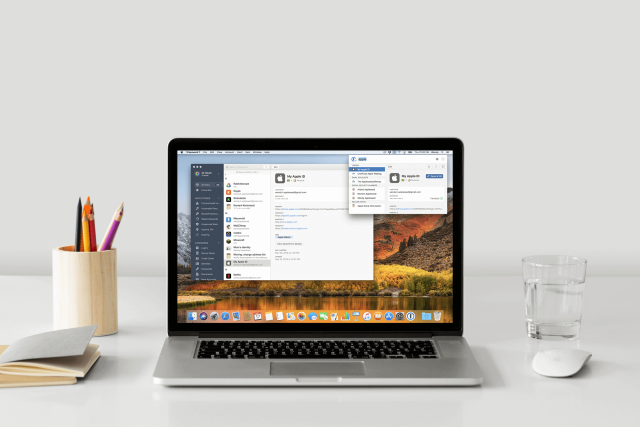
Most workplaces require you to have more usernames and passwords than you'd like. Instead of clicking that "forgot password" button once a week, 1Password can help organize and store all of your work and personal account credentials. As long as you can remember one password, the program will do the rest of the heavy lifting.
1Password keeps all of your usernames and passwords, along with secure notes, credit card numbers, and other sensitive information of your choosing, in a vault that's secure using AES-256 bit encryption and a secret key that only you know. It also syncs across all of your devices, allowing you to quickly log in to any of your accounts with just a couple taps or clicks. 1Password also has browser extensions for the most popular browsers so, when you inevitably create a new account somewhere on the web, you can quickly save it to 1Password without thinking twice about it.
Solid security, seamless integration, and ease of use have made 1Password one of my most used programs on a daily basis. It's sped up my workflow immeasurably, and I spend much less time fumbling with temporary passwords and emailed security codes thanks to it. And at $2.99 per month, it's one of the most affordable ways you can make your work and personal lives a little bit easier.

1Password
$2.99/month from 1Password (Ars Technica may earn compensation for sales from links on this post through affiliate programs.)
Nekteck 4-port 72W USB Wall Charger
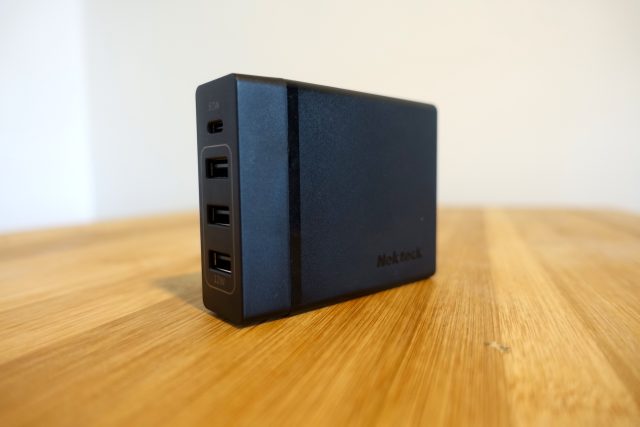
If your loved one has many devices that often need charging at the same time, the Nekteck 4-port 72W USB Wall Charger should make their day-to-day less of a headache. Itll keep them in arms length of four USB charging ports, including a 60W USB-C Power Delivery (PD) port thats capable of refilling nearly all recent smartphones and many Ultrabooks and MacBooks (15-inch MacBook Pro notwithstanding) at maximum speeds. Nekteck includes a three-foot USB-C to USB-C cable in the box, and there are three 12W USB-A ports alongside the PD port that can charge other accessories at a more traditional rate. (Just note that the whole thing can only output 72W total at a time, so you wont get the full 12W out of each USB-A port if more than one is in use simultaneously.)
The charger connects via an AC outlet, but at 3.14×3.74×1.97 inches, the station itself wont chew up a ton of room on a desk. Its also been certified by the USB Implementers Forum—a body headed by Apple, Intel, and other tech giants that looks over the USB spec—so you can be confident that it wont fry anyones devices over time. Plus, at $30, its good value for the amount of power it packs.

Nekteck 4-port 72W USB Wall Charger
$29.99 from Amazon (Ars Technica may earn compensation for sales from links on this post through affiliate programs.)
Logitech Craft
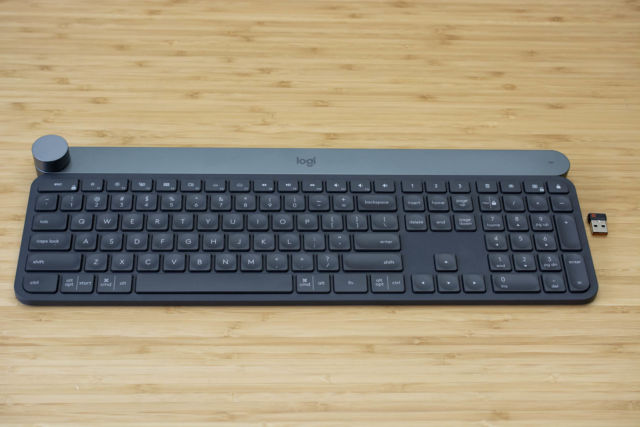
A good wireless keyboard can be hard to find, but Logitech's Craft is one of the more luxurious ones that stands out. Primarily, it's a solid keyboard that's relatively quiet and has decent travel, and the experience doesn't falter even after months of continuous use. It also has a great battery life—it charges via USB-C and will last weeks on a single charge, even when used every day for hours at a time. It conveniently connect to your PC via Bluetooth or the included universal USB receiver as well.
A peculiar perk is the dial that sits at the Craft's top-left corner. It can be programmed using Logitech options (along with other mappable keys) to do different things like adjust volume, switch tabs, and edit a photo's contrast and brightness, and more depending on the program you're currently using. That makes it a natural pick for creatives who will find the dial's precision better than that of a trackpad or a mouse, but it's also just a convenient tool for regular users as well.
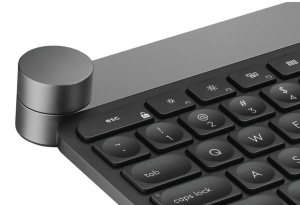
Logitech Craft
Buy Now (Ars Technica may earn compensation for sales from links on this post through affiliate programs.)
Listing image by Logitech
Fnatic miniStreak
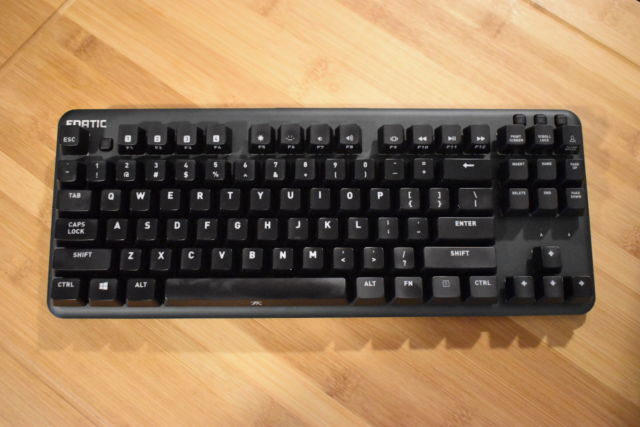
If your loved one cares more about typing feel than wireless convenience, a mechanical keyboard like the Fnatic miniStreak could make more sense. It uses the tried-and-true Cherry MX switches that many find more gratifying to press than the membrane or scissor-switch keyboards found with most laptops or desktops. (Cherry MX Brown switches are generally a good middle ground of speed and tactile feedback, if youre not sure which one is best.) Its primarily marketed as a gaming keyboard and works well for that purpose, with full RGB lighting and easy macro customization. But even if your recipient has no interest in PC gaming, the miniStreaks rounded edges and black matte aluminum finish give it a less aggressive look than many gaming keyboards. Its also possible to set the backlighting to a standard white tone in Fnatics companion app (which doesnt require an account sign-up to use) or shut it off altogether right from the board. At that point, the $90 miniStreak becomes a versatile, comfortable, and relatively affordable entry to mechanical keyboards. Its tenkeyless, so look elsewhere if your recipient insists on a number pad, but at 14 inches wide, less than 1.5 inches thick, and just over 1.5 pounds, it eats up little room on a desk. That it connects through a detachable USB-C cable makes it easy to pack up and move from the home office to the office office, if needed. It has dedicated media controls: volume mute and mic mute buttons sit in the top right corner, while a function lock button in the top left lets you use the media controls in the function row without having to hold the Fn key. And a palm rest is included in the box, though its not the most straightforward thing to attach.
The miniStreaks price is most evident in its ABS keycaps, which are prone to attracting fingerprints and are generally cheaper-feeling than a good set of double-shot PBT caps. But its possible to replace these with more premium models if your loved one ever gets to the point of that being a problem. The Cherry MX switches here are more durable than traditional keyboards, and the miniStreaks case doesnt sound or feel particularly hollow as you clack away. Not everyone will love the deeper feedback provided with each keypress here, and the noisiness of the switches may annoy anyone else in earshot, but many people swear by mechanical keyboards for a reason. A good model like this might make your recipients day-to-day work a little more bearable.

Fnatic miniStreak (Cherry MX Brown)
Buy Now (Ars Technica may earn compensation for sales from links on this post through affiliate programs.)
Apple Smart Keyboard
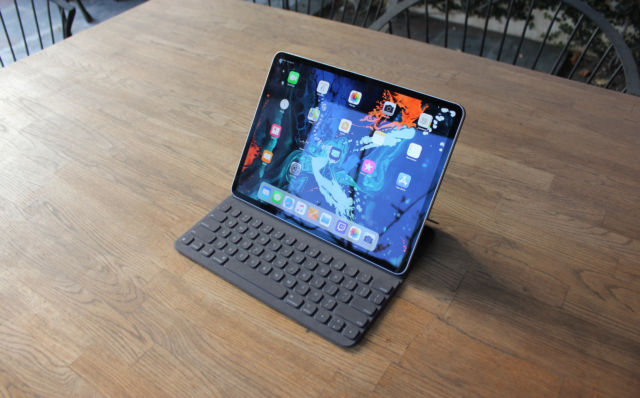
Whether an iPad can truly replace a laptop depends on the person using it. At worst, though, even an entry-level iPad can serve as a nice supplement for emails, research, or light writing. Pairing the tablet with a keyboard is the easiest way to make it more productive, and Apples own Smart Keyboard remains the simplest model to use. Its more expensive than wed like, and frankly its only solid as a keyboard, not great—but in a market with few standouts, its pure convenience makes it worthwhile. Thats primarily because it uses Apples Smart Connector pins, which let it quickly attach to a newer iPad without the need to futz with Bluetooth settings or manage a separate battery. Just snap it on and its fully compatible with iOS. There are different models depending on whether your recipient is using an 10.2-inch iPad, iPad Air, 11-inch iPad Pro, or 12.9-inch iPad Pro, but either way the keyboard adds little bulk or weight. Just note that the model for the 10.2-inch iPad, 10.5-inch iPad Pro, and 3rd-gen iPad Air doesnt include any protection for the back of the device and only props the tablet up at one angle; the Smart Keyboard Folio for the newest iPad Pros is a full-on case and supports two angles.
Again, given how thin the Smart Keyboard is, the actual typing experience here is far from revelatory. It keeps the iPad easily portable, but there just isn't much room for satisfying travel or large keys. But for what it is, its fast enough, the fabric coating feels smooth, and the keys are spaced well enough to avoid mistakes. Its also nice that the keyboard is easy to clean, with no crevices for gunk to fall into. Working from an iPad still requires some level of compromise, but the Smart Keyboard makes it possible without totally ruining what makes Apples tablets appealing in the first place.

Apple Smart Keyboard for iPad (7th gen) and iPad Air (3rd gen)
$143.99 from Amazon (Ars Technica may earn compensation for sales from links on this post through affiliate programs.)
CalDigit Pro Dock
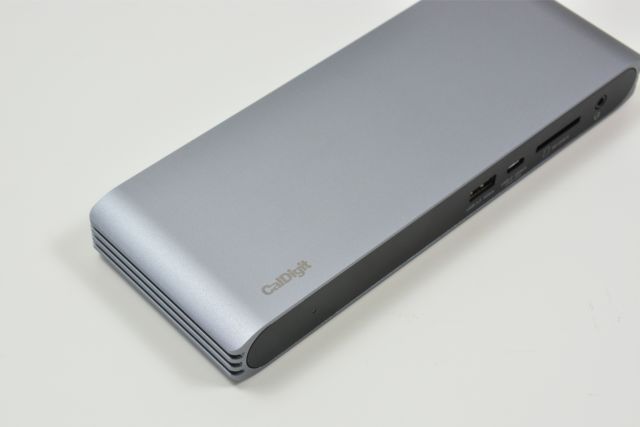
The newest laptops aren't exactly the most connectivity-friendly machines, but CalDigit's Pro Dock can fix that problem. If you have someone in your life that's constantly plugging and unplugging accessories, juggling peripherals, and in general messing with their workspace so they can connect to everything they need to, a USB-C dock could be helpful to them. CalDigit's Pro Dock is a good option for two main reasons: it works with both Thunderbolt 3 and USB-C PCs and it's relatively inexpensive at $199.
Thunderbolt 3 is the fastest and most advanced version of the USB-C connector type, but Thunderbolt 3 and other types of USB-C ports look the same. It can be hard to determine which type of connector is on your PC, but the Pro Dock makes it so you don't have to know. When connected to a Thunderbolt 3 machine, it will provide the fastest data transfer speeds capable of Thunderbolt 3 ports. When connected to another USB-C port type, it will adjust speeds and capabilities appropriately.
This makes it an easy gift because you don't have to ask your loved one what type of connector their PC has. Also, most Thunderbolt 3 docks cost more than $200, so the Pro Dock's $199 price tag is on the low end of the spectrum. CalDigit's Pro Dock is a solid gift that will make a big difference in any workspace, and it won't break the bank as much as other docks would.

CalDigit Pro Dock
$209.95 from Amazon (Ars Technica may earn compensation for sales from links on this post through affiliate programs.)
Logitech C920S HD Pro
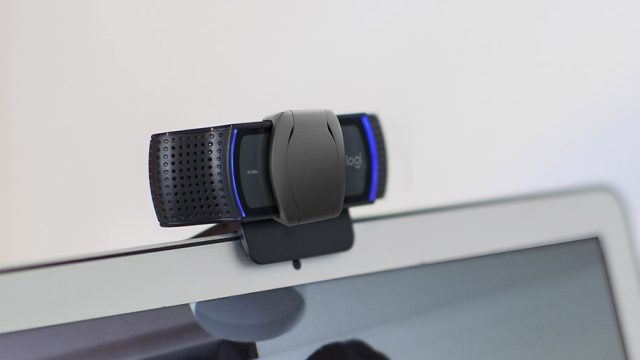
If your loved one spends a good chunk of their workday on video calls, first give them your condolences, then consider upgrading them to a dedicated webcam if they dont own one already. The Logitech C920S HD Pro is a good value here. Its immediately recognized by macOS and Windows 10 devices once its plugged in. It has a foldable “foot” and a large front cutout that lets it sit on top of any monitor or laptop without wobbling or coming loose. And while Logitech has relatively straightforward software that lets you more granularly adjust picture settings like contrast and gain, it isnt required to get the whole thing working. It also comes with a shutter that can cover the lens when the camera isnt in use, though the privacy-conscious may be better off just unplugging the device altogether once their call is over.
Most importantly, its video quality is strong out of the box. It takes clear 1080p video at 30 frames per second, with a nearly 80-degree field of view. Its autofocus works relatively quickly, and while its not quite as impressive in darker settings, it does a decent job at automatically adjusting exposure when lighting is less consistent.
A 1080p resolution and 30fps should be more than enough for most peoples needs: Logitech sells a C922x Pro Stream webcam that supports 60fps video at 720p, but its video and microphone quality is otherwise similar despite costing around $20 more. That might only be worth it if your loved one wants to dabble in streaming on YouTube or Twitch. The Logitech Brio, meanwhile, steps up to 4K video, a 90-degree field of view, and a USB-C port—the C920S requires a USB-A port somewhere on your device, but it costs nearly $100 more, putting it closer to the professional-level tier. For simply helping your loved one look and sound clearer on group calls, the HD920S is simple and effective.
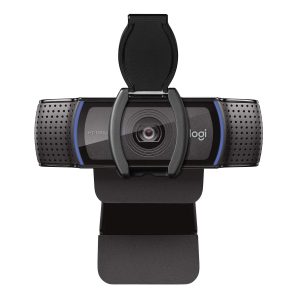
Logitech C920S HD Pro
Buy Now (Ars Technica may earn compensation for sales from links on this post through affiliate programs.)
Creative Pebble Plus

Whichever monitor the people on your shopping list use, chances are it doesnt sound great—if it even has built-in speakers at all. Adding dedicated external speakers like the Creative Pebble Plus will give them a noticeable boost in audio quality. This is a $40 set that includes two small USB-powered speakers and a dedicated subwoofer.
All of this is too cheap and compact to get close to “premium” sound quality: the subwoofer boosts the low-end but implies deep sub-bass more than actually delivering it. Tracks can sound distorted when the volume is cranked to maximum levels. Hooking everything up means dealing with a buffet of cables, too. Even still, the Pebble Plus performs exceedingly well for such a low price, with good clarity in the mids, solid separation, relatively crisp highs, and an overall sense of balance. The speakers are smartly designed to fire sound upwards from a 45-degree angle, so you get something close to the full brunt of whatevers playing.
Actually setting up the Pebble Plus is as simple as plugging them into a USB wall charger, connecting the subwoofer into the right speaker, and jacking in the included 3.5mm cable. A volume dial on that speaker is all there is as far as playback controls. Both speakers measure 4.5×4.8×4.5 inches, while the subwoofer measuRead More – Source







